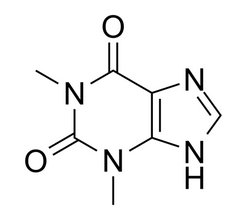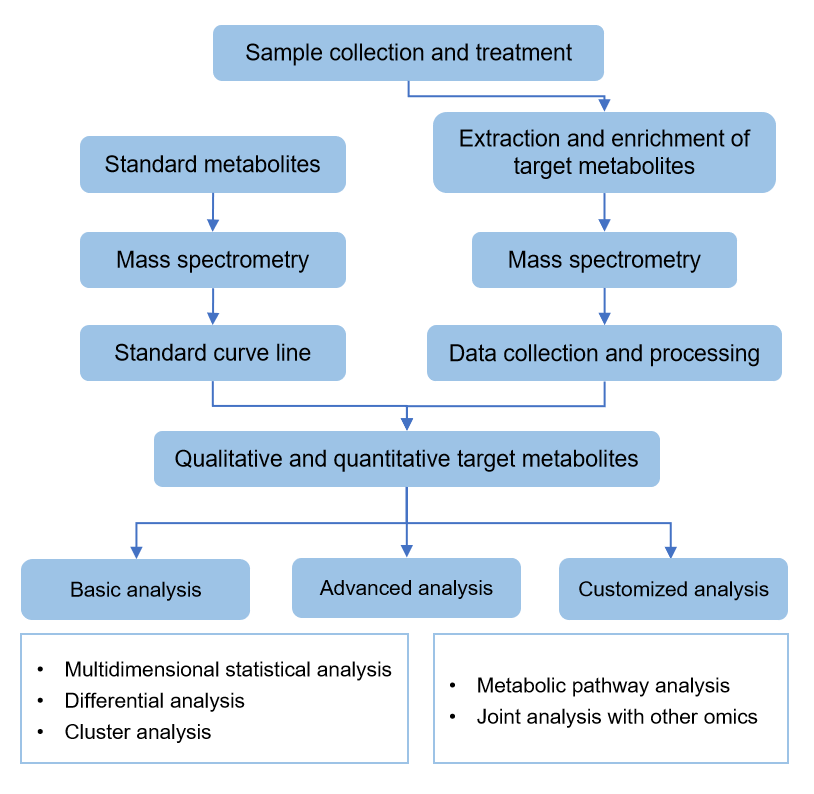Theophylline Analysis Service
Submit Your InquiryWhat is Theophylline?
Theophylline, also known as 1,3-dimethylxanthine, is a naturally occurring compound found in various plant sources, including tea leaves, coffee beans, and cocoa beans. It belongs to the class of methylxanthine drugs and is structurally related to caffeine and theobromine.
When consumed, theophylline undergoes metabolism in the body through a series of enzymatic reactions. The primary pathway for theophylline metabolism is hepatic (liver) metabolism. The enzyme cytochrome P450 1A2 (CYP1A2) plays a crucial role in theophylline metabolism, converting it into various metabolites.
Theophylline metabolism follows a two-step process. In the first step, theophylline is demethylated by CYP1A2 to form 3-methylxanthine. This metabolite is then further metabolized to 1-methylxanthine in the second step, also catalyzed by CYP1A2. Both 3-methylxanthine and 1-methylxanthine are pharmacologically active metabolites, although their activity is generally weaker compared to theophylline itself.
The metabolites of theophylline undergo further transformations, including oxidation and conjugation reactions, before being eliminated from the body primarily through urine. The elimination half-life of theophylline and its metabolites can vary among individuals based on various factors such as age, liver function, smoking status, and drug interactions.
Analysis of theophylline metabolism can help to understand the pharmacokinetics of the drug, including its absorption, distribution, metabolism and excretion, and thus guide the administration of theophylline to minimize the risk of toxicity.
In addition, metabolic analysis of theophylline can be used for personalized medical approach development. genetic variants in the CYP1A2 enzyme can affect the metabolic rate of theophylline, leading to inter-individual differences in drug response and potential side effects. genetic testing for CYP1A2 polymorphisms can help identify individuals who are slow metabolizers and may require lower doses of theophylline to avoid toxicity.
Creative Proteomics offers a variety of analytical techniques to analyze the metabolism of theophylline. These techniques include high-performance liquid chromatography (HPLC), liquid chromatography-mass spectrometry (LC-MS), and gas chromatography-mass spectrometry (GC-MS). These methods allow the quantification and identification of theophylline and its metabolites in biological samples such as blood, plasma or urine.
 Molecular structure of theophylline
Molecular structure of theophylline
Workflow of Theophylline Assay
For theophylline analysis, a typical LC-MS setup includes a high-performance liquid chromatography (HPLC) system and a mass spectrometer. the HPLC system helps to separate theophylline from other interfering compounds present in the sample, while the mass spectrometer provides highly sensitive detection and identification based on the unique mass-to-charge ratio (m/z) of theophylline.
The LC-MS method for theophylline analysis involves several key steps:
Sample preparation: Biological samples such as blood, plasma or urine need to undergo a sample preparation process prior to LC-MS analysis. This typically involves the extraction, purification and concentration of theophylline from the sample matrix.
Chromatographic separation: A reversed-phase HPLC column is used to separate theophylline from the other components of the sample. The column retains theophylline based on its hydrophobicity, while other interfering compounds elute earlier or later.
Mass spectrometric detection: The theophylline eluting from the HPLC column enters the mass spectrometer where it is ionized and fragmented. The ions generated are detected and quantified according to their m/z values, allowing for accurate and sensitive analysis of theophylline.

Application of Theophylline Analysis
Metabolic pathways: Theophylline undergoes extensive metabolism in the liver, primarily through cytochrome P450 enzymes such as CYP1A2. specific metabolic pathways and metabolite formation are identified to understand the biotransformation of theophylline, predict potential drug interactions, and assess the impact of genetic polymorphisms on its metabolism.
Pharmacokinetic studies: The absorption, distribution, metabolism and excretion (ADME) of theophylline can be studied by analyzing it in biological matrices such as blood or urine, which helps to understand the behavior of the drug in vivo, bioavailability and potential interactions with other drugs.
Drug development: During drug development, the pharmacokinetic and pharmacodynamic properties of theophylline need to be determined in preclinical and clinical studies to ensure its safety, efficacy and optimal dosing regimen.
Delivery standard
- Experimental procedure
- Parameters of HPLC and MS
- Raw data, chromatograms and mass spectra
- Metabolites quantification data
- Custom analysis report
References
- Singh A. Discovery of novel genes and enzymes involved in amaryllidaceae alkaloid biosynthesis using integrated metabolomics and transcriptomics in Narcissus pseudonarcissus King Alfred. Université du Québec à Trois-Rivières, 2018.
- Xian Y F, Su Z R, Chen J N, et al. Isorhynchophylline improves learning and memory impairments induced by D-galactose in mice. Neurochemistry International, 2014.
- Kim H, Bu Y, Lee B J, et al. Myristica fragrans seed extract protects against dextran sulfate sodium-induced colitis in mice. Journal of Medicinal Food, 2013, 16(10):953.







